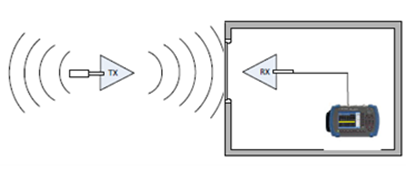EMI Shielding Effectiveness Testing
Electromagnetic or radio frequency interference happens when electromagnetic fields emitted by the electronic devices interrupt or degrade the normal operation of other electronic devices and systems. Serious EMI can create hazards in critical applications or even health of the people nearby.
The arousing concerns of the hazards of electromagnetic fields from devices and antennas increase the demands of the shielding effectiveness testing. The other hot topic is the security issue of connected devices, some people decided to use the RFID blocking wallets or bags with shielding to reduce the risk on leakage of personal information. To evaluate the risks of these concerns and performances of those shielding, Shield Effectiveness Testing become popular in recent years.
Shielding Effectiveness Testing
Electromagnetic shielding is the practice of reducing or blocking the electromagnetic field (EMF) through barriers made of conductive, magnetic, or even building materials. Those materials are applied to the enclose the space to isolate the electronic devices from the outer environment. Depending on the applications, the enclosures can be walls, bags, or the coverages of the cables. Shielding Effectiveness Testing is to determine the ability of the materials or enclosures to block or reduce the electromagnetic fields or radio frequency signals.
- Facilities
- Data Centres
- Mobile Base Stations
- Hospitals
- Consumer Products
- RFID blocking Wallets and Bags
- Maternity Clothing
- Window Films
- Blankets, Curtains, and Hats
- Cables
Facility Level
Do you realize that critical industrial or restricted environment can create an unintentional radiator and act as another type of “hacker” to affect the stability of your system? To address this issue, several governments and contractors decided to setup the shielding rooms to isolate the critical facilities and avoid the effect to the critical systems, e.g. data centres, base stations, hospitals. This is what we normally called as electromagnetic shielding enclosures. Such requirements have also been set as rules on lots of the building's ordinances and guidebooks of the private contractors.
Testing Equipment
A common testing setup can be created with a signal generator and spectrum analyzer with related antenna and appropriate frequency, e.g. 9kHz – 40GHz.
| Reference Measurement |  |
| Shielding Effectiveness Measurement |  |
Product Level
You may hear some news on how an RFID reader could steal your personal information via your RFID cards, identification cards or credit cards in your bags. You can also be easy to find the RFID blocking wallets, but the performances of such products may be varied in the market. Intertek Hong Kong can help to evaluate the performances of such wallets and bags according to the global standards. RFID Blocking Performance Test per RFID Blocking Card, V13.1.0. is one of the appropriate standards.
Apart from security, the effect of electromagnetic fields (EMF) is a growing concern. Recent news has revealed the suspected association between cancer inducement and exposure to the technology due to the proximity of rooftop mobile phone base stations, power stations, train stations, etc. It is speculated that an increase in the use of the latest telecommunication technologies such as 5G, Wi-Fi 6E or Bluetooth 5 could induce cancers to civilians. People starts to search for the products claimed the ability to protect from EMF signals. Manufacturers are also integrating such technologies to products like window films, blanket, curtain, and hats.
Reference Standards and Guidelines
Intertek Hong Kong is available to conduct the tests according to different international standards, including IEEE std 299-1997 and MIL-STD-285(1997). We are also willing to help our customers to design the customized tests according to the specific requirements. Considering the planar materials, we are available to test the shielding effectiveness between 30MHz and 1GHz according to ASTM-4935-10. This standard provides the performance metrics of testing product by dB level.
- IEEE STD 299-1997
- MIL-STD-285 (1997)
- ASTM-4935-10
- FTTS-FA-003
Contact us today to know more about our solution:
Victor Ko
Sales Director
victor.ko@intertek.com
+852 9423 2262
